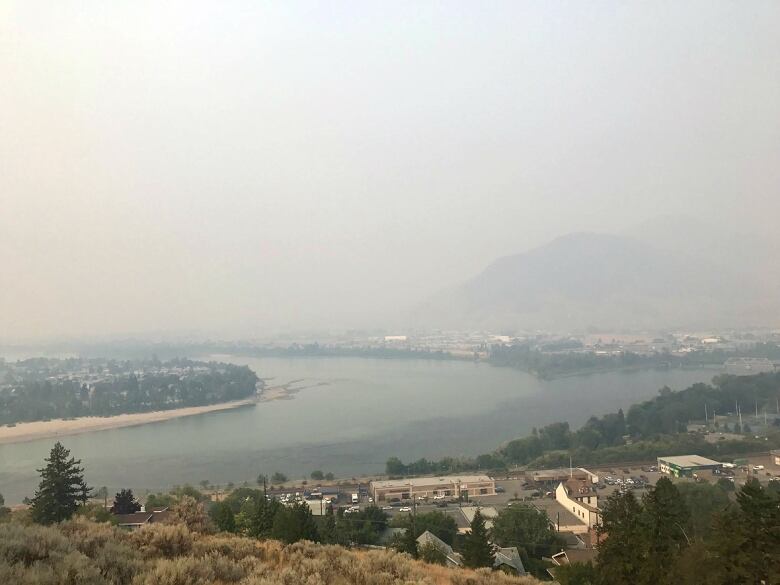New tool tests effects of wildfire smoke on B.C. wine
After the worst summer on record for B.C. wildfires, vintners are concerned smoke may taint their wine

Researchers from UBC's Okanagan campus have developed a new method to assess whether smoke from wildfires could have an impact on grapes and the taste of wine.
The method can't yet give a concrete prediction, but shows promise to reduce the time and money wine producers spend on managing the effects of smoke on their harvest,says Matthew Noestheden, one of the researchers of the study published in the Journal of Agricultural and Food Chemistry.
"I think everyone in the valley is concerned about it this year given the amount of smoke that we had,"he said.
He said wine producers currently use a subjective measure in which they take berries, ferment them and taste the wine to determine whether it has a burnt, smoky flavour calledsmoke taint.
"That small batch ferment can take eight to 10 days and it's very labour and cost intensive to the winery. Using our approach, they can get these results in a matter of hours," he said.

Results in a matter of hours
As part of their method, researchers used advanced instrumentation to experimentally expose grapes to smoke to measure the amount of volatile phenols, a class of chemical compounds,absorbed by the fruit.
Noesthedensays the compounds are naturally present in both grapes and in smoke, but phenols in smoke appear at higher concentrationsand can change the flavor of the fruitand eventually the wine, when it is produced.

"By knowing ... how much each crop has been impacted by smoke exposure, growers and winemakers alike can make informed decisions about whether the grapes should be used or abandoned altogether," said Wesley Zandberg, assistant professor of chemistry at UBCO.
Not a major issue with 2017 grapes
The summer of 2017 was the worst on record for B.C. wildfires and some areas of the province saw multiple days of smoke so thickit far exceeded the chart used on the B.C. Air Quality Health Index.
Of the grapes tested so far, Noestheden does not believe the smoke had a major effect.
"There doesn't appear to be a major issue with this year's harvest, but at this point we won't really know until they make the wine," he said.
According to Noesteden, the testing method is merely "an important first step"in developing a predictive measure for wine flavour.
"Right now we can give [winemakers] a number of phenols, but it's unclear how that correlates to tasting smoke taint in the wine. We're not quite there yet."
With files from CBC's Radio West.












_(720p).jpg)


 OFFICIAL HD MUSIC VIDEO.jpg)
.jpg)



























































































